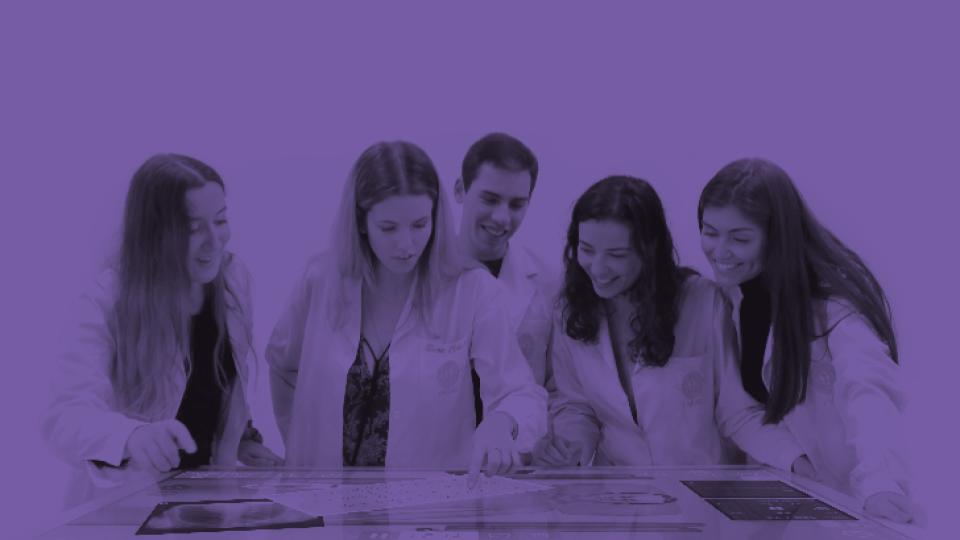The SAFETY project, funded by the Erasmus+ Knowledge Alliance and coordinated by the University of Foggia, aims to improve emergency medical education in Europe. Over three years, ten partners from seven countries developed an innovative educational course using simulation devices to safely train healthcare professionals. Read more about the project in this article
The working team of the SAFETY – Simulation Approach For Education and Training in emergencY project, funded by the European Program Erasmus+ Knowledge Alliance 2, and coordinated by the Department of Medical and Surgical Sciences of the University of Foggia (Italy), has contributed in the closing event of the project, held in Foggia on 30-31 January 2024 where project results were presented.
The SAFETY project has seen all partners actively engaged in these three years of work within an international environment and satisfied for reaching the final phase to share the results obtained.
SAFETY involved 10 partners from 7 European countries (Austria, Germany, Italy, Norway, Portugal, Romania, Spain) representing both Universities and companies’ environments. The project coordination was on behalf of the University of Foggia, under the lead of Prof. Gilda Cinnella, representing the research team in Anesthesia and Intensive care of the Department of Medical and Surgical Sciences.
The main objectives of SAFETY were devoted to the development of a new educational course in the field of Emergency Medicine based on the learners’ needs and the use of simulation devices for training. The project idea originated from the real need to improve learning processes in the medical field, since the current teaching method is lacking in safety for the operator and for the patients. The healthcare staff (as doctor or nurse), is catapulted from university class to wards and have to practice on the patients first. In this way, errors normally due to the learning process directly affect patients.
To this aim, the training materials developed by SAFETY are offering the possibility for learners to practice an activity in a safe environment without compromising patient safety, also providing a wide range of curriculum requirements through clinical cases and role-playing, simulator of procedures or full mission simulators where a learner works through a simulated scenario, often using a high-tech mannequin.
Thanks to the cooperation between academic and company partners, as requested by the ERASMUS+ Knowledge Alliance program, SAFETY is also contributing to enlarge the scope of job placement for the new graduated, to become entrepreneurs (in the field of medical device and private training with simulation devices), or employees hired by companies dealing with medical device development/training.
During the first two years of project implementation, all SAFETY partners have been involved in different activities, mainly on Desk Research on Higher Education Institutions training offer and simulation activity for Emergency Training, led by the Hospital Clinic Barcelona (Spain) and Training needs analysis and definition of the Body of Knowledge of the Emergency Simulation, led by the UniFg team (Italy). In particular, the main activities were performed on the needs analysis (students, academics and companies), the gap analysis and the preparation of the Body of Knowledge (BoK) necessary to structure the new courses. To this aim, the applied methodologies were desk research on evaluation of educational offer, literature review, collecting good practices on education and training and investigation. In parallel three different questionnaires were developed and delivered respectively to students (medical and nurses), academics (professors and trainers in the medical field) and companies involved in the simulation field to understand their training needs and perform a gap analysis on the actual education system among EU involved countries.
The surveys involved 1464 students, 288 academics and 23 companies from different EU countries (mainly Italy, Germany, Norway, Portugal, Romania, Spain), collecting their training needs.
Interestingly, results showed how students believe they have acquired good training skills for the approach and management of patients, in particular from the possibility of participating in practical medical simulation sessions (more information about training needs analysis and project results are available here).
The results obtained were extremely useful for creating the reference framework for both theoretical and practical modules, supporting the development of different clinical scenarios in Emergency medicine.
Specifically, the last outstanding result is the SAFETY Moodle platform (free access online) developed for training in e-learning to support courses in Emergency Medicine. It integrates theoretical and practical modules with virtual simulated patients for a blended learning experience.
In particular, 10 peer-reviewed theoretical modules, with comprehensive courses expanding on cardiovascular and respiratory emergencies, various types of shock, trauma, neurological diseases, thermal and toxicological emergencies, as well as a systematic approach to emergencies and introduction into the field of medical simulation.
Each theoretical module, developed by university partners, includes a minimum of 2 hours of video recordings and presentations.
Furthermore, a total of 39 simulated emergencies have been recorded by the teams involved in the project, so as to illustrate the approach to such cases by learners in multiple countries throughout the European continent. These are structured as practical modules, and the featured clinical simulation scenarios have been enacted in simulation centres, covering a wide range of medical emergencies.
At the end of each module, including both theoretical and practical courses, the learner is given the occasion to solve a virtual case, using the virtual patient simulator offered by the partner from Body Interact.
A key component of the project is the use of multiple-choice questions (MCQs) for student evaluation. Each theoretical module concludes with a pop-up quiz, and after completing the entire course, learners take a test quiz with 30 randomly selected MCQs.
This new tool contributes to a significant advancement in emergency medical education, leveraging technology and collaborative expertise to create a comprehensive, accessible, and engaging blended learning experience to a broad range of stakeholders: Medical students, Physicians in training (anesthesia, intensive care medicine, emergency medicine, and others), Nursing students, Paramedics.
SAFETY has implemented a “EU student-centred approach” in order to consider their needs to structure new courses and new educational pathways tailored to learners’ needs and solving the actual training gaps.
Given the great opportunity for cross countries cooperation, SAFETY moved forward on the creation of a European Training Network focused on the knowledge sharing, acquisition of technical and non-technical skills in order to prevent and reduce medical error in the Emergency field with the common aim to expand further the training materials and continuing along the path created.
For more information:
Prof. Gilda Cinnella: gilda.cinnella@unifg.it
Dr. Fedele Colantuono: fedele.colantuono@unifg.it
SAFETY website: https://safetymedsim.eu/


SAFETY project – ERASMUS+ Knowledge Alliances (Grant agreement n. – 621605-EPP-1-2020-1-IT-EPPKA2-KA)
READ ALSO







































